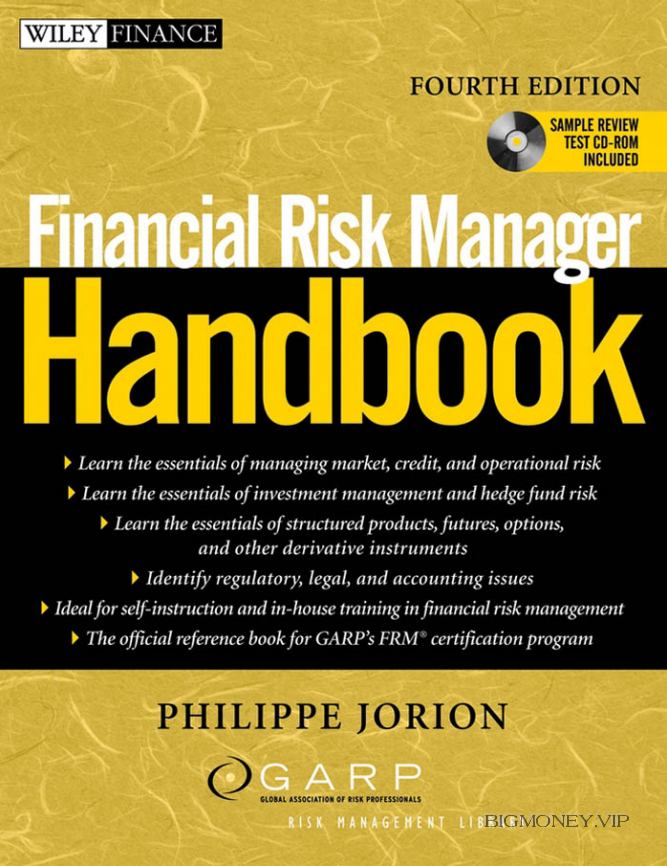Financial Risk Manager Handbook by Philippe Jorion

PART One
Quantitative Analysis
CHAPTER 1
Bond Fundamentals
Risk management starts with the pricing of assets. The simplest assets to study are
regular, fixed-coupon bonds. Because their cash flows are predetermined, we
can translate their stream of cash flows into a present value by discounting at a fixed
interest rate. Thus, the valuation of bonds involves understanding compounded
interest, discounting, as well as the relationship between present values and interest
rates.
Risk management goes one step further than pricing, however. It examines
potential changes in the price of assets as the interest rate changes. In this chapter,
we assume that there is a single interest rate, or yield, that is used to price the
bond. This will be our fundamental risk factor. This chapter describes the relationship
between bond prices and yields and presents indispensable tools for the
management of fixed-income portfolios.
This chapter starts our coverage of quantitative analysis by discussing bond
fundamentals. Section 1.1 reviews the concepts of discounting, present values, and
future values. Section 1.2 then plunges into the price-yield relationship. It shows
how the Taylor expansion rule can be used to relate movements in bond prices to
those in yields. This Taylor expansion rule, however, covers much more than bonds.
It is a building block of risk measurement methods based on local valuation, as
we shall see later. Section 1.3 then presents an economic interpretation of duration
and convexity.
The reader should be forewarned that this chapter, like many others in this
handbook, is rather compact. This chapter provides a quick review of bond fundamentals,
with particular attention to risk measurement applications. By the end
of this chapter, however, the reader should be able to answer advanced FRM questions
on bond mathematics.
1.1 DISCOUNTING, PRESENT, AND FUTURE VALUE
An investor considers a zero-coupon bond that pays $100 in 10 years. Assume that
the investment is guaranteed by the U.S. government, and that there is no credit
risk. So, this is a default-free bond, which is exposed to market risk only. Because
the payment occurs at a future date, the current value of the investment is surely
less than an up-front payment of $100.
To value the payment, we need a discounting factor. This is also the interest rate, or
more simply, the yield. Define Ct as the cash flow at time t and the




